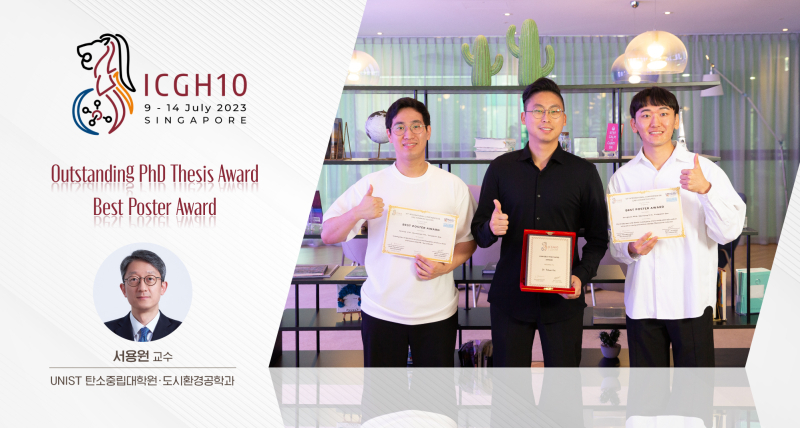UNIST researchers from Professor Seo Yong-won’s lab have garnered significant recognition for their outstanding contributions to gas hydrate research—a prominent carbon-neutral technology—at the 10th International Conference on Gas Hydrates (ICGH10) held in Singapore from July 9 to 14. The conference, celebrating its 10th anniversary this year, is renowned as a prestigious academic society dedicated to advancing the field of gas hydrate research—an area of study gaining increasing attention due to its potential applications in CO2 capture and storage.
Professor Yongwon Seo’s team achieved remarkable success by winning multiple esteemed awards at ICGH10. Their achievements include securing the Best Doctorate Paper Award and the Best Poster Award—testament to their exceptional scholarship and groundbreaking discoveries.
The Best Doctorate Paper Award was bestowed upon Dr. Yohan Lee, an Assistant Research Professor whose innovative research methods within the realm of gas hydrates have demonstrated substantial influence. Throughout his doctoral studies, Dr. Lee focused on ‘hydrate-based CO2 substitution storage technology,’ diligently investigating various aspects such as gas exchange phenomena and structural transitions occurring within different hydrate structures. His work has attracted considerable attention as a promising avenue for effectively storing CO2 while simultaneously recovering natural gas through substitution technology.
Additionally, SungWoo Kim and JunGyu Lim were honored with the newly introduced Best Poster Award at ICGH10—recognizing their exceptional research results and encouraging future endeavors in gas hydrate studies. SungWoo Kim (Combined MS/PhD) received this accolade for presenting his groundbreaking research on pre-combustion CO2 collection technology using Semi-clathrate—a crystal structure formed by combining quaternary ammonium salts with water that exhibits properties akin to traditional gas hydrates but can be synthesized under atmospheric pressure. This innovative material shows promise in overcoming existing limitations associated with gas hydrate technology.
Meanwhile, JunGyu Lim (Combined MS/PhD) experimentally demonstrated that when gas is collected within a semicluster, the crystal structure can exhibit both orthorhombic and tetragonal configurations—highlighting the potential for thermodynamic inhibition under specific conditions.












